Beginning August 27, a very large and potent red tide reached the shoreline areas of the Sonoma Coast. Since then, as a result of this phytoplankton bloom, tens of thousands of abalone have died and washed ashore, covering the beaches at the tideline. Divers are reporting dead or dying abalone just about everywhere along this stretch of coastline.
A visit to the Sonoma Coast on Saturday, September 10th revealed the results of the massive die-off. Talking with divers, park personnel, and a Department of Fish & Game officer provided more information and revealing images of the results of this rare event.
Starting at Reef Campground (which is closed to vehicle access, but open to those who walk in), I hiked down the access road, through the camping area, and down to the lower parking area. Taking the small, overgrown trail north along the creek took me to one of the areas which was very hard hit by the red tide. The beach here has a very large concentration of dead abalone which have washed ashore – there are literally hundreds of dead abalone (maybe thousands), all washed ashore without their shells:
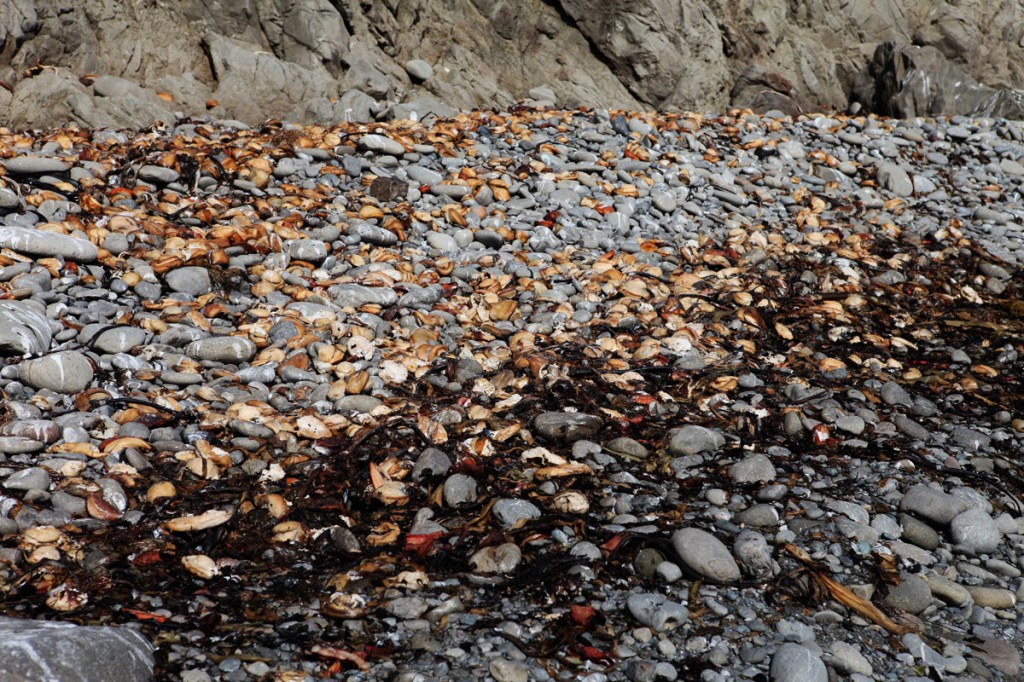
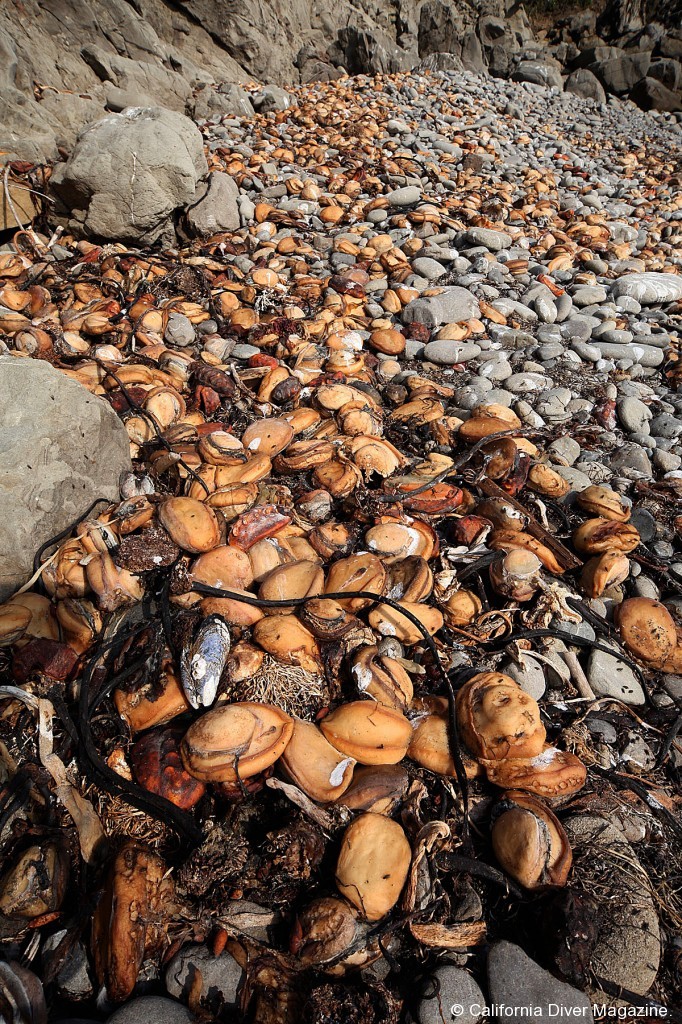
Needless to say, the smell here is very strong, and seagulls have moved in to feed on the remains washed ashore. Of the areas I surveyed, this spot had the largest concentration of dead abalone, however there may be similar or even larger amounts in other areas which are not easily accessible. There were no divers here, although most divers won’t make the relatively long hike down with all their gear to dive here anyway.
—————————————————————————
Subscribe to California Diver Magazine Today
and read more great stories on diving in California!
iPad users – Download our digital version through Zinio here!
—————————————————————————
Just north at Fort Ross (South Cove), there was a very large presence of seagulls and other birds on the shoreline feeding on a dozen or so that were easily found here. The conditions were very calm with little surf. Two divers were gearing up to enter the water here – I hope to hear from them soon on what they saw underwater. There were only a few divers at Fort Ross this afternoon.
Farther North at Stillwater Cove, there were fewer abs washed ashore, however there was a very thick bed of kelp washed ashore, potentially hiding hundreds of dead abs, and dozens of dead abalone were easily visible on top. One Zodiac inflatable was anchored midway out of the cove but there were no shoredivers at the time I stopped by. Here are a few dead abs which were easily found on the surface of the thick kelp bed:
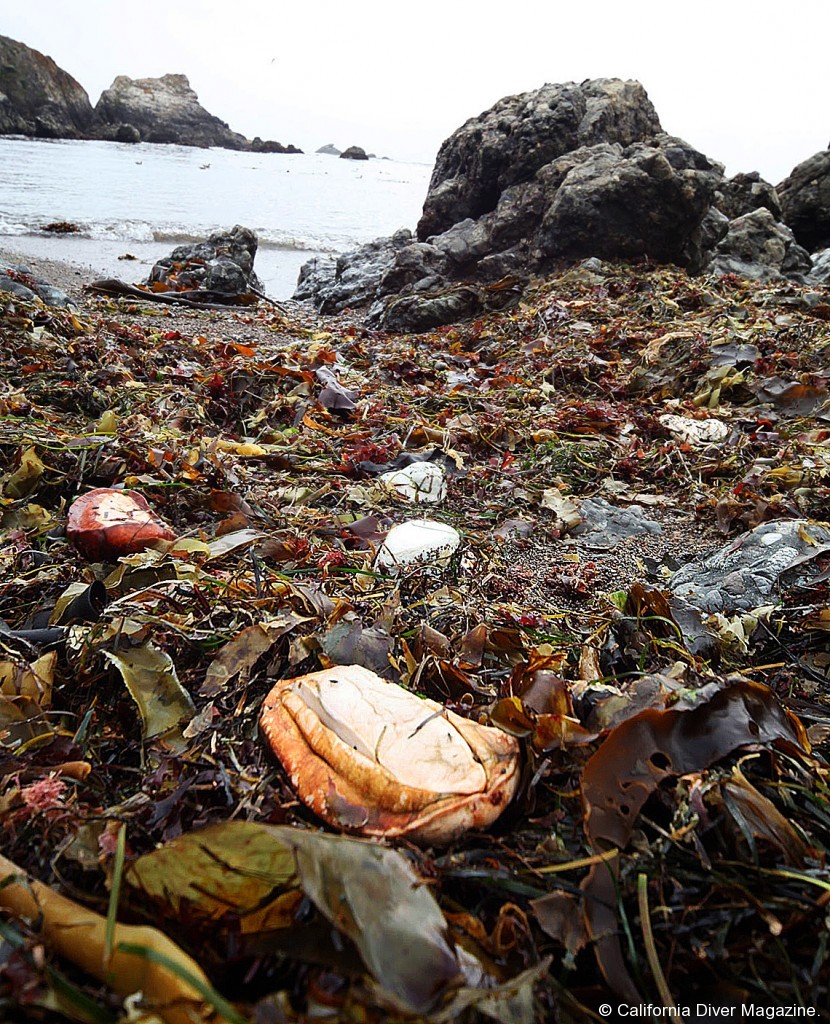
Still farther north at Salt Point State Park, I spoke with a park employee at the entrance about the recent red tide and subsequent die-off, and inquired about how many divers had been diving this weekend. I was told that there were definitely fewer divers than what would usually be expected. Live abalone could still be found in deeper waters outside the coves, but areas close to shore had taken a big hit. Talking with a couple divers here also confirmed this: there were a lot of empty shells underwater, and to get their (live) abs, divers need to head to the outside of the cove. Today, the conditions were very good, with almost no wind and calm seas.
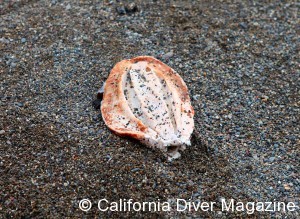 At this time, it’s unknown (at this time) exactly how the abalone died. Scientists are waiting for lab results to see if toxins from the concentrated plankton poisoned the abalone as well as the urchins, chitins, sea stars and other animals that have been washing up in unusual numbers, or if the deaths resulted from depleted oxygen in the water resulting from the bloom. While red tides are not rare and occur regularly along the California coastline, not all have toxins or are harmful.
At this time, it’s unknown (at this time) exactly how the abalone died. Scientists are waiting for lab results to see if toxins from the concentrated plankton poisoned the abalone as well as the urchins, chitins, sea stars and other animals that have been washing up in unusual numbers, or if the deaths resulted from depleted oxygen in the water resulting from the bloom. While red tides are not rare and occur regularly along the California coastline, not all have toxins or are harmful.
There is no word on any seasonal closures or reduced limits this year. Reportedly the Department of Fish & Game and other agencies are still tallying the losses and surveying areas to see how much of the population was affected. The red tide did not reach or affect abalone and other sealife in Mendocino County.
Only time will really tell how much this will affect the abalone populations and the immediate future of the fishery.
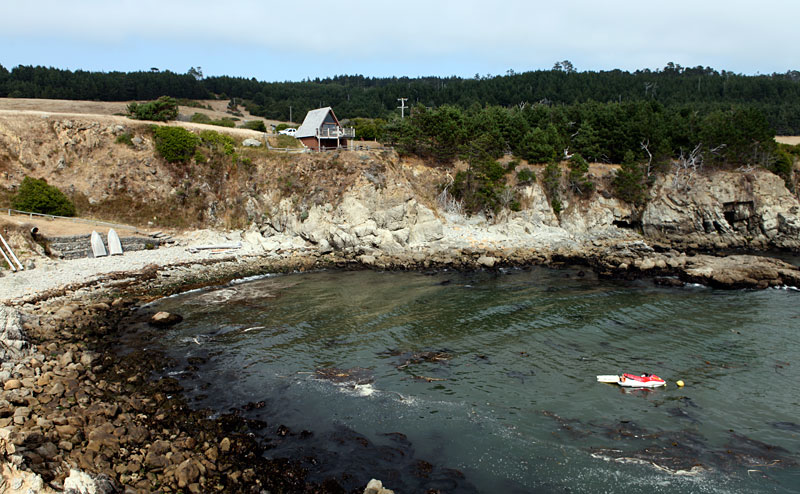
Gerstle Cove at Salt Point State Park
——————————————————————-
Words and photos by Chris Constantine.
(Further information, photos, and feedback are welcomed).
——————————————————————-
Click here to read California Diver Magazine on your iPad!
All photos ©Copyright 2011 California Diver Magazine and may not be used without permission. Seriously.
See related story here.
